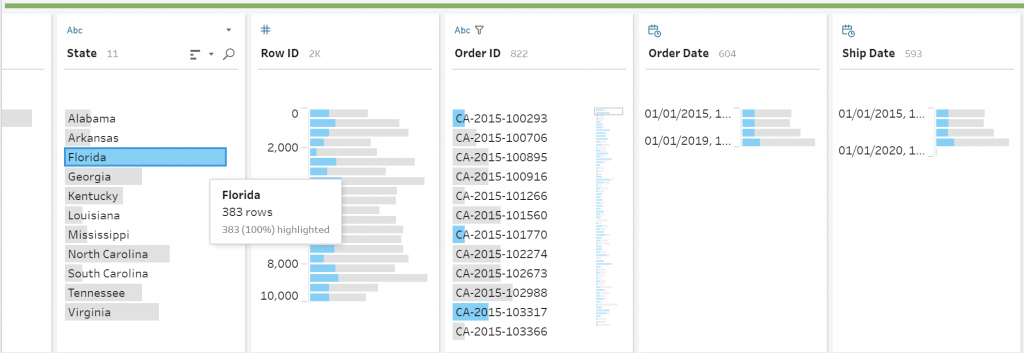

- Tableau data prep tutorial how to#
- Tableau data prep tutorial pdf#
Tableau data prep tutorial pdf#
pdf file to scan for tables.Īdd more data from a different database: In the left pane, click Add next to Connections. This option allows you to create a new scan so that you can specify different pages in the. If the pages that were scanned in step 3 of the procedure listed above do not produce the tables that you need in the left pane, click the drop-down arrow next to the PDF File connection, and click Rescan PDF file. For more information, see Join Your Data or Union Your Data. Get more data into your data source by adding more tables or connecting to data in a different database.įrom the left pane, drag additional tables to the canvas to combine data using a join or union. Here is an example of a PDF file data source: Tableau might provide multiple interpretations of a table depending on how the table is presented in your.
 Tableau has interpreted the table on the page in another way. Tableau has identified another unique table or sub-table on the page. If Tableau has identified more than one table on a page, the second part of the table name can indicate one of two things: The second part of the table name indicates the order the table was identified. For example, you might see a table name like ", Table 1." The first part of the table name indicates the page in the. pdf file are given unique names and are displayed in the left pane after a scan. Otherwise, from the left pane drag a table onto the canvas and then click the sheet tab to start your analysis. If your file contains one table, click the sheet tab to start your analysis. The default name is automatically generated based on the file name. For example, use a data source naming convention that helps other users of the data source figure out which data source to connect to. (Optional) Select the default data source name at the top of the page, and then enter a unique data source name for use in Tableau. On the data source page, do the following: To correctly scan for this table, specify the page number that the PDF reader displays. The PDF reader displays a number, and the. When you scan for tables, specify the page number that the PDF reader displays and not the page number that might be used in the document itself, which may or may not start from page 1.įor example, suppose you want to use "Table 1" from the image below. Note: The scan counts the first page of the file as page 1, similar to most PDF readers.
Tableau has interpreted the table on the page in another way. Tableau has identified another unique table or sub-table on the page. If Tableau has identified more than one table on a page, the second part of the table name can indicate one of two things: The second part of the table name indicates the order the table was identified. For example, you might see a table name like ", Table 1." The first part of the table name indicates the page in the. pdf file are given unique names and are displayed in the left pane after a scan. Otherwise, from the left pane drag a table onto the canvas and then click the sheet tab to start your analysis. If your file contains one table, click the sheet tab to start your analysis. The default name is automatically generated based on the file name. For example, use a data source naming convention that helps other users of the data source figure out which data source to connect to. (Optional) Select the default data source name at the top of the page, and then enter a unique data source name for use in Tableau. On the data source page, do the following: To correctly scan for this table, specify the page number that the PDF reader displays. The PDF reader displays a number, and the. When you scan for tables, specify the page number that the PDF reader displays and not the page number that might be used in the document itself, which may or may not start from page 1.įor example, suppose you want to use "Table 1" from the image below. Note: The scan counts the first page of the file as page 1, similar to most PDF readers. 
You can choose to scan for tables in all pages, just a single page, or a range of pages. In the Scan PDF File dialog box, specify the pages in the file that you want Tableau to scan for tables. Select the file you want to connect to, and then click Open. Make the connection and scan your document for tablesĪfter you open Tableau, under Connect, click PDF File. If your PDF includes RTL text, characters might display in reverse order in Tableau. Note: Tableau doesn’t support right-to-left (RTL) languages. pdf file data and set up the data source.
Tableau data prep tutorial how to#
This article describes how to connect Tableau to.







 0 kommentar(er)
0 kommentar(er)
